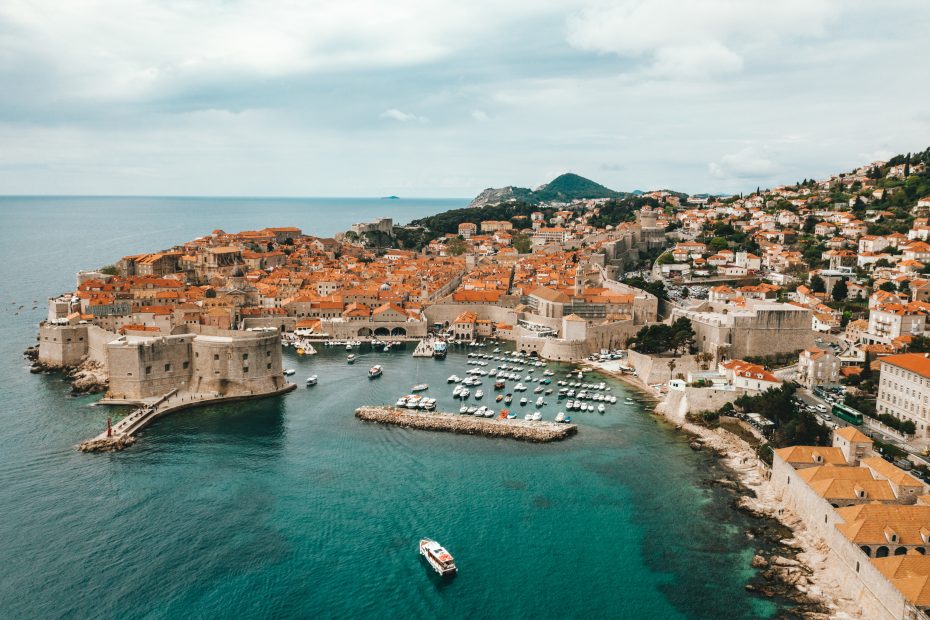Table of Contents
Introduction
Croatia is a country with a long and fascinating history spanning thousands of years. Located in Southeastern Europe along the Adriatic Sea, it has been shaped by its strategic position at the crossroads of various cultures. Throughout its complex past, Croatia has absorbed influences from ancient civilizations, medieval kingdoms, Renaissance trends, and 20th century political upheavals. This amalgamation has resulted in a rich cultural heritage that is evident in Croatia’s architecture, art, music, cuisine, and traditions today. Join me as we embark on a journey through time to explore some of the key aspects of Croatia’s diverse and vibrant culture.
Ancient History
The area of modern-day Croatia was first inhabited in prehistoric times by the Illyrians, an Indo-European speaking people. They established the Kingdom of Illyria and left behind hill forts, artifacts, and ruins that provide glimpses into their warlike, semi-nomadic culture. Beginning in the 4th century BC, colonies were founded along the Adriatic coast by ancient Greeks, who brought Hellenistic culture. The most notable Greek settlements were Issa (Vis) and Tragurion (Trogir).
In the 1st century AD, the region was conquered by the Romans and incorporated into the Roman province of Dalmatia. Roman rule broughtcities, roads, aqueducts, temples, and amphitheaters, many examples of which can still be seen in places like Split and Pula. The Roman period left a lasting impact on Croatia’s culture, language, and architecture.
Middle Ages
With the decline of the Roman Empire in the 5th century AD, Croatia fell under the sway of various Germanic kingdoms. In the 7th century, Croats migrated to the area and established the medieval Kingdom of Croatia in 925 under King Tomislav. The kingdom reached its peak in the 11th century, when it covered most of modern-day Croatia and Bosnia.
Meanwhile, the Adriatic coast faced incursions from the Ottoman Empire starting in the 15th century. Fortified towns like Dubrovnik, Split, Zadar, and Šibenik were repeatedly attacked, though they remained free from Ottoman rule. The constant threat of Turkish raids shaped Croatia’s architecture and culture during this period.
Renaissance and Baroque Eras
From the 15th to the 17th centuries, Croatia experienced cultural bloom during the Renaissance and Baroque eras that mirrored trends in Italy and Central Europe. Fine architecture arose in coastal cities like Dubrovnik, which became known as the “Pearl of the Adriatic.” Elegant palaces, churches, monasteries, and fountains were built in a distinctive Baroque style featuring ornate design.
The arts also flourished, especially painting and sculpture that blended Renaissance naturalism with religious motifs. Prominent artists like Giorgio da Sebenico introduced new techniques and aesthetics. Meanwhile, music incorporated complex polyphony and orchestration that was influential across Europe.
19th Century
The early 19th century was marked by the Napoleonic Wars, which led to French occupation from 1809 to 1813. After Napoleon’s defeat, Croatia passed to the Austrian Empire. Efforts to Germanize the region spurred the Croatian National Revival, a movement to promote Croatian language, culture, and identity.
Croatia was granted autonomy within the Austrian Empire and reunited with other South Slavic peoples in the Kingdom of Serbs, Croats and Slovenes after World War I. The late 19th and early 20th centuries saw increased literacy, literature, art, and music that solidified a distinctive Croatian national culture.
20th Century
Various Yugoslav states in the 20th century attempted to balance competing ethnic identities. As part of socialist Yugoslavia after WWII, Croatia underwent rapid industrialization and urbanization. The later decades were marked by rising nationalism and calls for independence.
In 1991, Croatia declared independence, which led to the bloody Croatian War of Independence against Yugoslav forces. The devastation of war was followed by rebuilding and reviving Croatian heritage in the 1990s and 2000s. Croatia joined the European Union in 2013, opening a new chapter.
Modern Day
Despite its complicated past, Croatia today stands out for its cultural diversity and richness. Its cosmopolitan cities showcase Roman ruins, medieval fortifications, Baroque buildings, Viennese-style cafés, and contemporary art. Unique folk traditions endure in rural areas, from music and dances to costumes, legends, and carnivals.
Croatia has become a major tourist destination, attracting visitors to its Adriatic coastline, scenic national parks, and historic sites. The flavors of Mediterranean, Balkan, and Central European cuisine fuse in its food and wine. Moving forward, Croatia continues to preserve its varied heritage while embracing its identity as a modern European nation.
Conclusion
Croatia’s long journey through time has fostered a multifaceted culture and identity. Its strategic location has made it a crossroads of civilizations, which is reflected in everything from its language and religious makeup to its art, architecture, and music. By exploring Croatia’s eventful past, we gain insight into the rich cultural mosaic that characterizes this diverse country today. From ancient ruins to medieval fortresses, Renaissance-era treasures to 20th century struggles, Croatia’s layered history has shaped a captivating national heritage.
FAQs
What are some of the ancient civilizations that influenced Croatia?
Croatia was influenced by ancient Illyrians, Greeks, and Romans who settled along the Adriatic coast and left archaeological remains. Greek colonies and Roman towns helped introduce classical culture.
How did the Middle Ages shape Croatian identity?
Medieval kingdoms like Croatia solidified a distinct Slavic identity that was also shaped by defense against Ottoman incursions in coastal areas. Fortified towns from this period remain.
What was the impact of the Renaissance and Baroque eras?
During these eras, Croatia flourished culturally with architecture, art, music and literature that blended Italian and Central European styles. Cities like Dubrovnik prospered.
How did 19th century events stimulate Croatian nationalism?
Napoleonic and Austrian rule spurred a Croatian National Revival to promote the Croatian language and culture. Croatia gained autonomy within Austria-Hungary.
How did the 20th century transform Croatia’s heritage?
Yugoslav socialism led to rapid modernization, while the 1991 independence war caused devastation. Post-war rebuilding focused on reviving Croatian national heritage.
